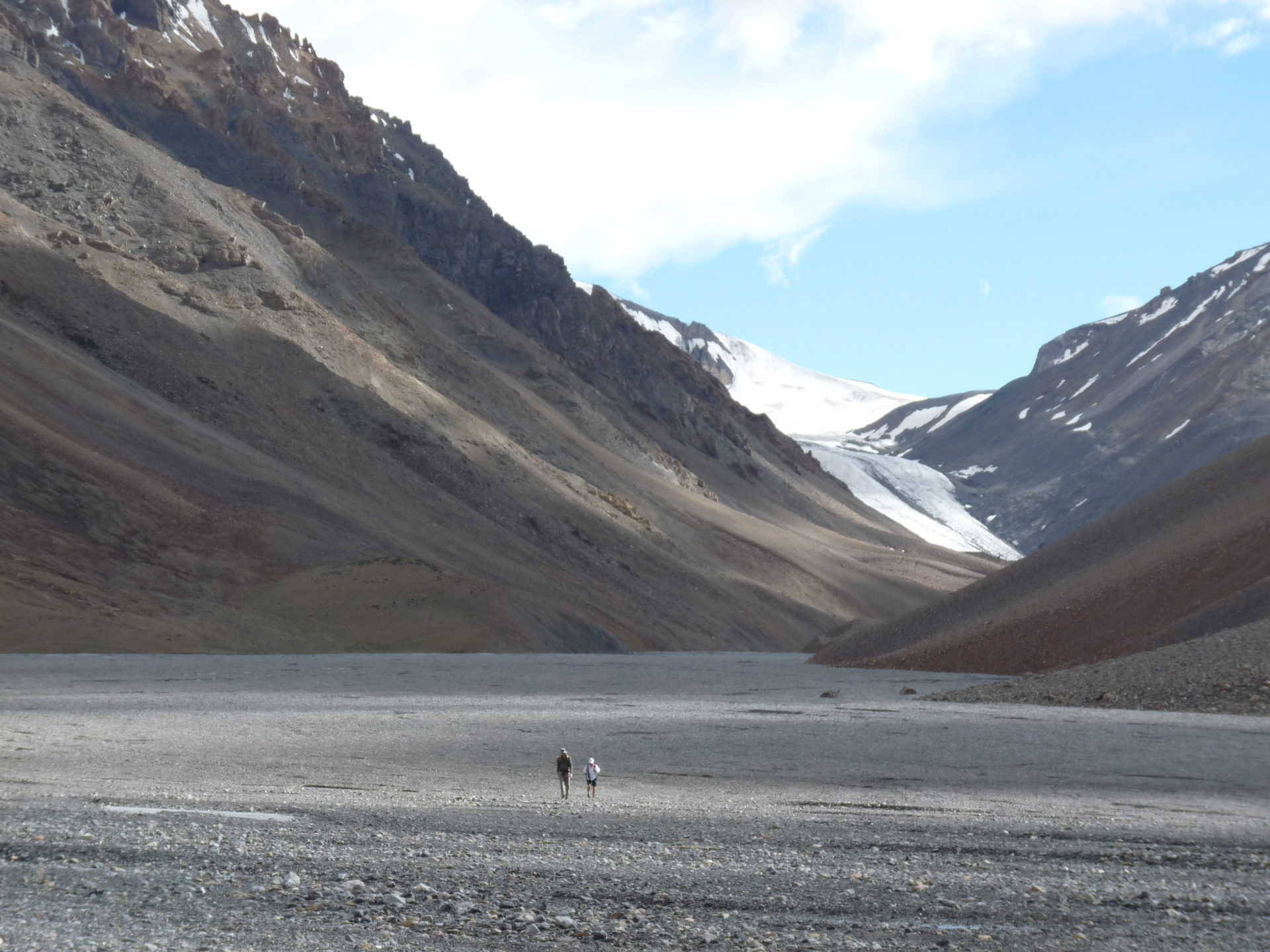- Sport & Abenteuer Reisen
- Trekking Reisen
Overview
It is certainly one of the most fascinating and challenging treks in the Himalayas.
We start the trek in Kibber, a lonely village at an altitude of 4200 meters in the Spiti Valley. We hike through deep gorges, over rocky moraines, an icy glacier with crevasses and have done some altitude meters till we have climbed the 5578 m high Parang La. At the end of the seven-day trek, we will reach the breathtaking Tsomoriri lake, which will far exceed all our expectations.
The Rupshu Valley, through which we will hike, is nestled between Ladakh in the north, Tibet in the east and Zanskar in the west. It is part of the Changthang Plateau and is categorized by its high dry areas, remote villages, snow-capped peaks and azure lakes (the largest is the Tsomoriri at 4500 m).
This area is only accessible during a few summer months and is populated by Tibetan wandering nomads with their herds of yaks and pashmina goats. Our trek will give us the high Parangla Pass lead to their summer settlements and we are witnessing a unique human culture that is far from the modern world.
The scenery is wild and lonely with snow-capped peaks that limit the wide horizon. This area is also home to rare species such as the blue sheep, capricorn and rare snow leopard.
We will be happy to organize a cultural connective tour in a private vehicle in Ladakh after the trek.
Program
Day 1 Arrival in Delhi, check in at the hotel and in the afternoon onward travel to Manali (2050 m)
We pick you up from the airport and bring you to our hotel, after some peace and breakfast, we will visit Delhi on a small exploration tour. In the afternoon we take the air-conditioned Volvo bus to Manali (night trip, 14 hours) (B/-/-)
Day 2 Manali Sightseeing and Acclimatization
Today we discover at Manali and it’s neighboring village Vaschisht. We visit the hot springs and the Hadimba temple. Overnight stay at The HotelB/-/-
Day 3 Manali via Kunzum Pass (4550 m) to Kaza by jeep (150 km)
An eight-hour drive to the Spiti Valley. First, the 3980 m high Rothang Pass into the high mountain desert and further over the 4550 m high Kunzum Pass. We will pass the first Buddhist villages in Spiti and then reach the district capital Kaza. Overnight stay at the hotel (B/-/-)
Day 4 Visit to Tabo and Dhankar Monastery
A small sightseeing tour to the most famous monasteries of the Spiti Valley. If we are lucky, we see the monks during their rituals and prayers. We can also take an acclimatization walk to Lake Dhankar. Overnight stay at the hotel (B/-/-)
Day 5 Visit to Ki Monastery and the village of Kibber, overnight in Kibber
Today we visit the famous Ki Monastery. It is the largest monastery in Spiti and it is worth taking part in the daily morning prayer and tasting the butter tea! Kibber was for a long time the highest permanently inhabited village, which had electricity and was connected by road. Overnight stay at Homestay (B/-/D)
Day 6 Day Hike to Taschigam and overnight in Kibber
An important day for acclimatization- We take a day hike to a neighbouring village. Overnight stay in the Homestay (B/L/D)
Day 7 Kibber to Thalda 4875 m (7 hours trek)
The first day of our trek. It goes down to the Parang Chu Gorge. Then we cross the river to get up to the green cultivated land around Dumla. We climb further up, where we can admire the Kang Nilda (6303 m) in the southeast. Also in the northeast you can see some peaks that rise above the Kunzum Pass. After that, our path winds down to our camp (4875 m). Overnight in a tent (B/L/D)
Day 8 Thalda to Boroghlen (Base Camp) 5180 m (7 hours trek)
Today we have to walk carefully over the slippery ground of the moraine of sand and debris. We descend 550 m into the Parilungbi Gorge. Then we follow the river to Jaghta. Afterwards the path goes up steeply and continues over the moraine. At the end of the difficult ascent there are two glacial valleys: one to the south, the other to the north. We follow the northern moraine and reach our camp (5180 m). (Overnight in a tent) B/L/D
Day 9 Boroghlen to Parangla Pass (5578 m) to Kharsa Gongma 5150 m (8 hours trek)
Today it is exhausting for all of us. It goes over snowfields and continues over rubble up to Parang La (5578 m) . At the top of the pass we have a spectacular view of the peaks of Lahaul and Ladakh. You can also see the river Parang Chu, which originates on the southern slopes of Parang La. (Overnight in a tent) B/L/D
Day 10 Kharsa Gongma to Thakote 4900 m (5 hours trek)
We cross the river near our camp and follow the river Pare Chu on the right. Now the valley is wide. Sometimes we walk on the riverbed, sometimes just above the river. We meet temporary settlements of the nomads and continue to our camp, where we have to cross some tributaries. (Overnight in a tent) B/L/D
Day 11 Thakote to Norbu Sumdo 4750 m (7 hours trek)
A walk along the right side of the river until we reach the place where another river merges with the Para-Chu. Here we have to cross the river and continue to the valley to our right hand. As we walk up the valley, the dusty landscape changes to a delicate green. The Tibetan nomads will welcome us. (Overnight in a tent) B/L/D
Day 12 Norbu Sumdo to Chuntung (Tsomoriri Lake 4542 m) (4 hours trek)
A wonderful and exciting day of trekking. Here the landscape changes dramatically. We walk through grass and sand and the valley continues and goes on. We cross a stream and finally reach Lake Tsomoriri. The lake is 24 km long and 6 km wide. You can see the Changpas (nomads) with their goats, sheep and yaks near the lake. If you are lucky, you can also spot a variety of wild animals. (Overnight in a tent) B/L/D
Day 13 Chuntung to Karzok 4540 m (4 hours trek) (overnight in a tent)
We hike along the nearby lake until we meet the small settlement of Karzok, the end of our trekking tour. (Overnight in a tent) B/L/D
Day 14 Karzok to Leh (221 km/ 10 hours) by car and check in to the hotel
We set off for a seven-hour drive to Leh. On the way we can visit the Thiksey Monastery. In Leh we check into our hotel. (Overnight stay at the hotel) B/L/-
Day 15 Leh Sightseeing
On foot we explore the beautiful city of Leh, visit the old town with the Leh Palace, as well as the Shanti Stupa, from where we will have a magnificent view of Leh. (Overnight stay at the hotel) B/-/-
Day 16 flight Leh-Delhi, departure home
Early in the morning we will take you to the airport. B/-/-
Services
- Tour Guide
- Transfer from Delhi Airport
- 1 x Hotel Room in Delhi with breakfast
- Volvo Bus Delhi-Manali air-conditioned
- 1 x Inn in Manali with breakfast
- 2 x Hotel in Kaza with breakfast
- 2 x Kibber Homestay with breakfast and dinner
- Day hike Taschigam with lunch
- complete transport
- 2 x Hotel Leh with breakfast
- Leh Sightseeing Walk
- Airport transfer
- Meals as advertised (B: Breakfast, L: Mitagessen, D: Dinner)
- Seven-day trek with:
- Trained trekking guide
- Cook and helper
- Load horses or carriers
- 7 nights accommodation in 2-man tents
- Kitchen tent
- Dining and staying tent
- Toilet tent
- 7 days full board (breakfast, lunch packages, dinner and snacks)
Domestic flight Leh-DelhiInternational flightVisaunmentioned meals and drinksEntrance feesTips
Highlights

Tsomoriri Lake 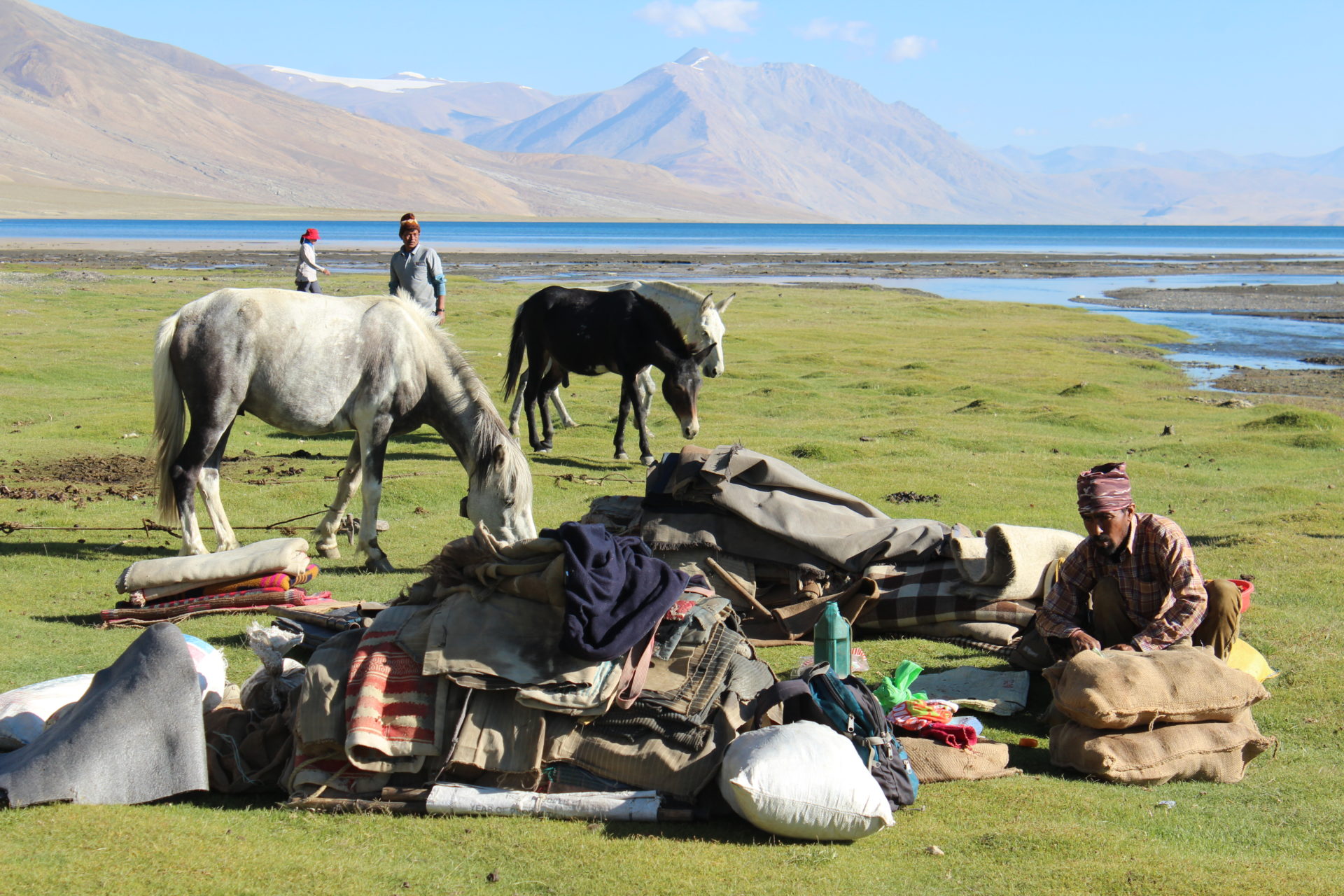
Camp 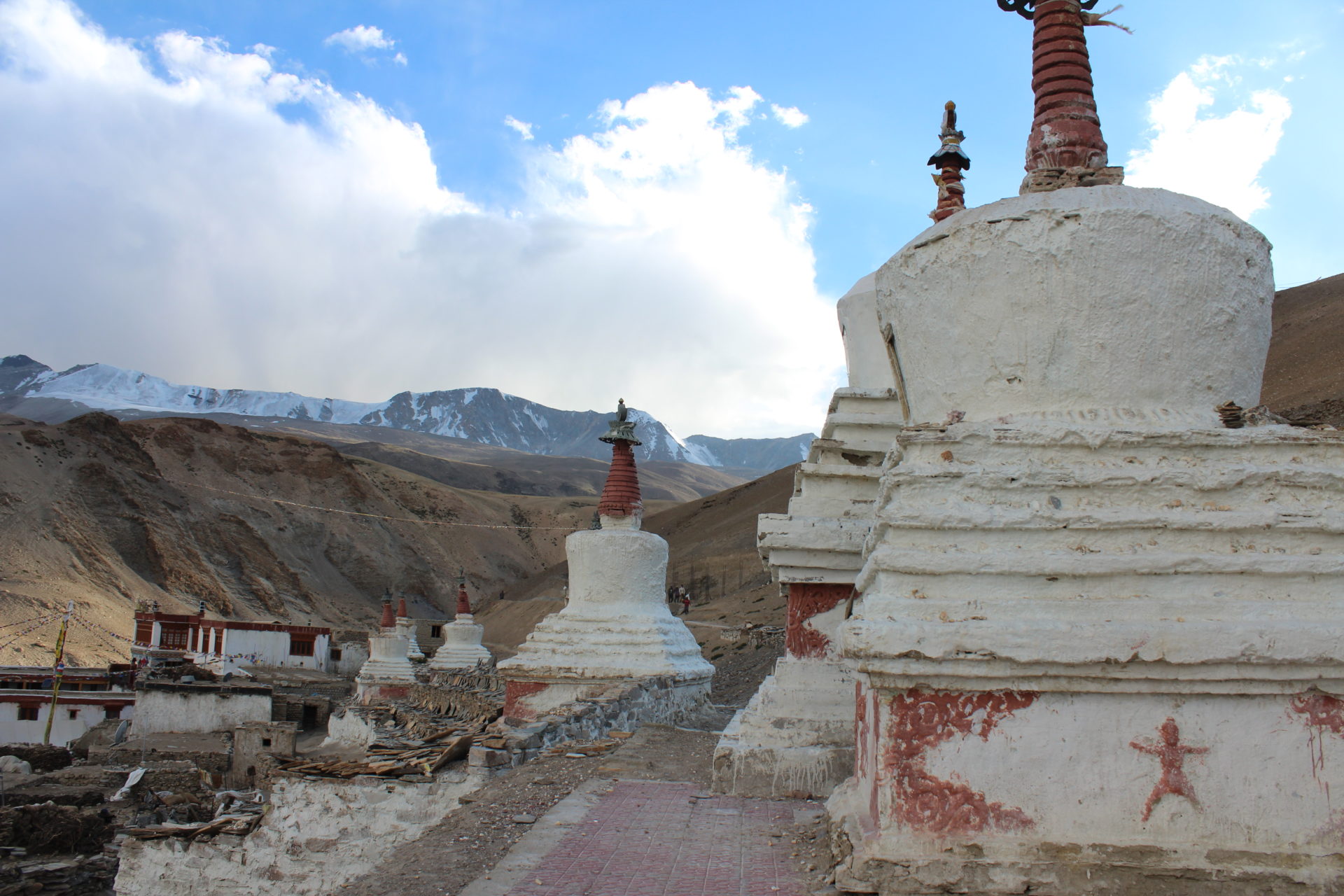
Karzok 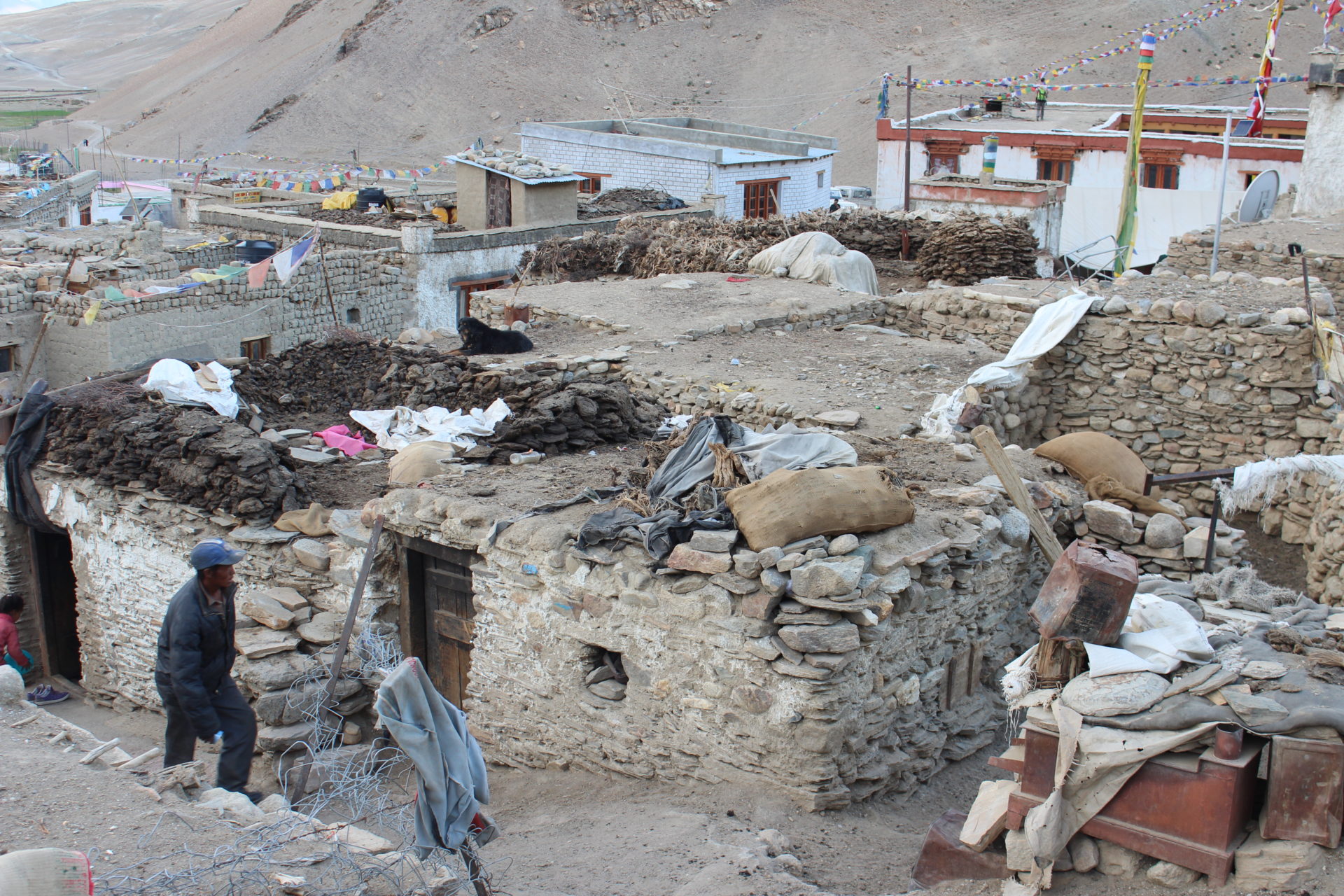
Karzok 
Camp 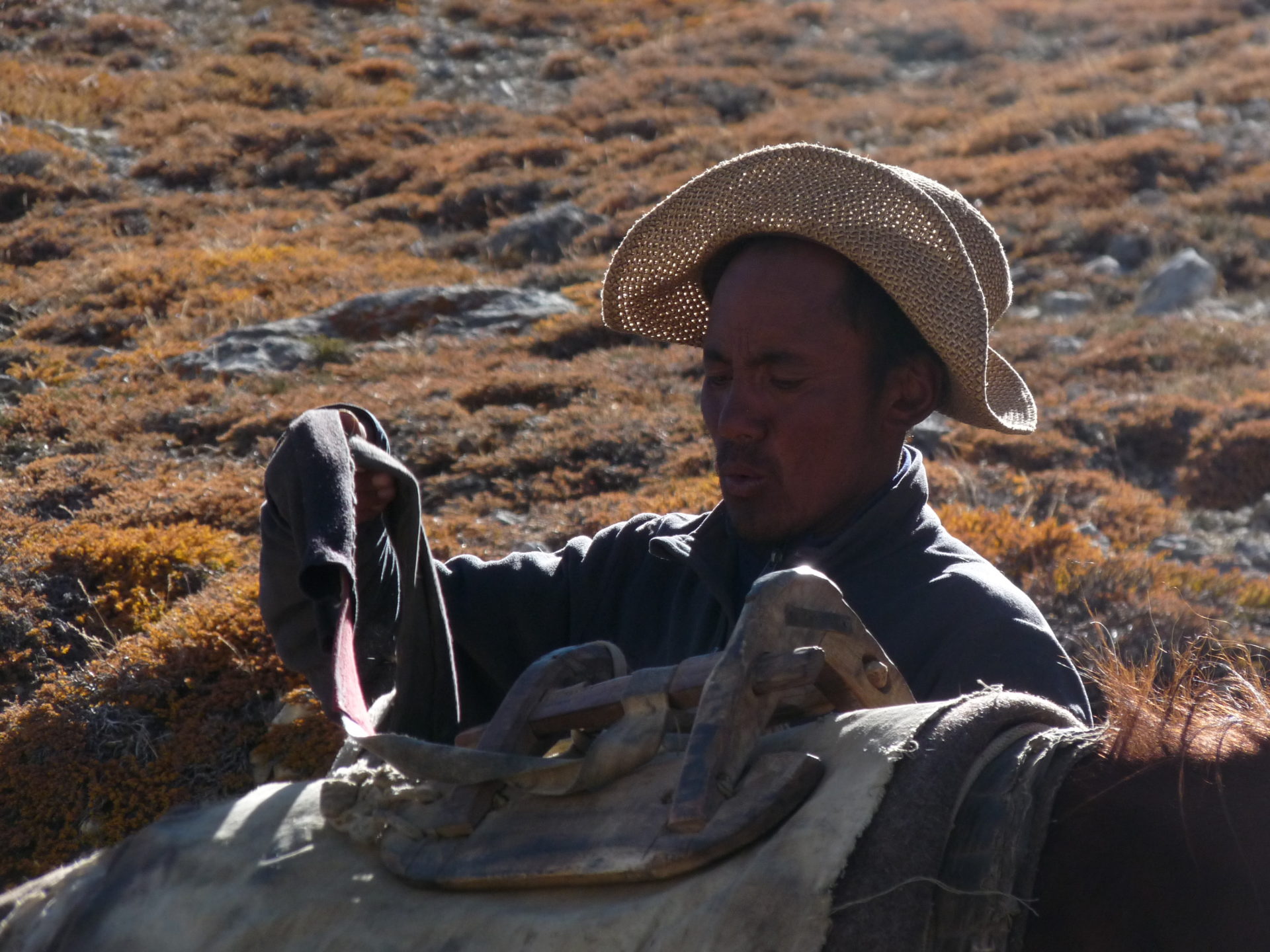
Horse man 
kitchen tent 
Nomade Camp 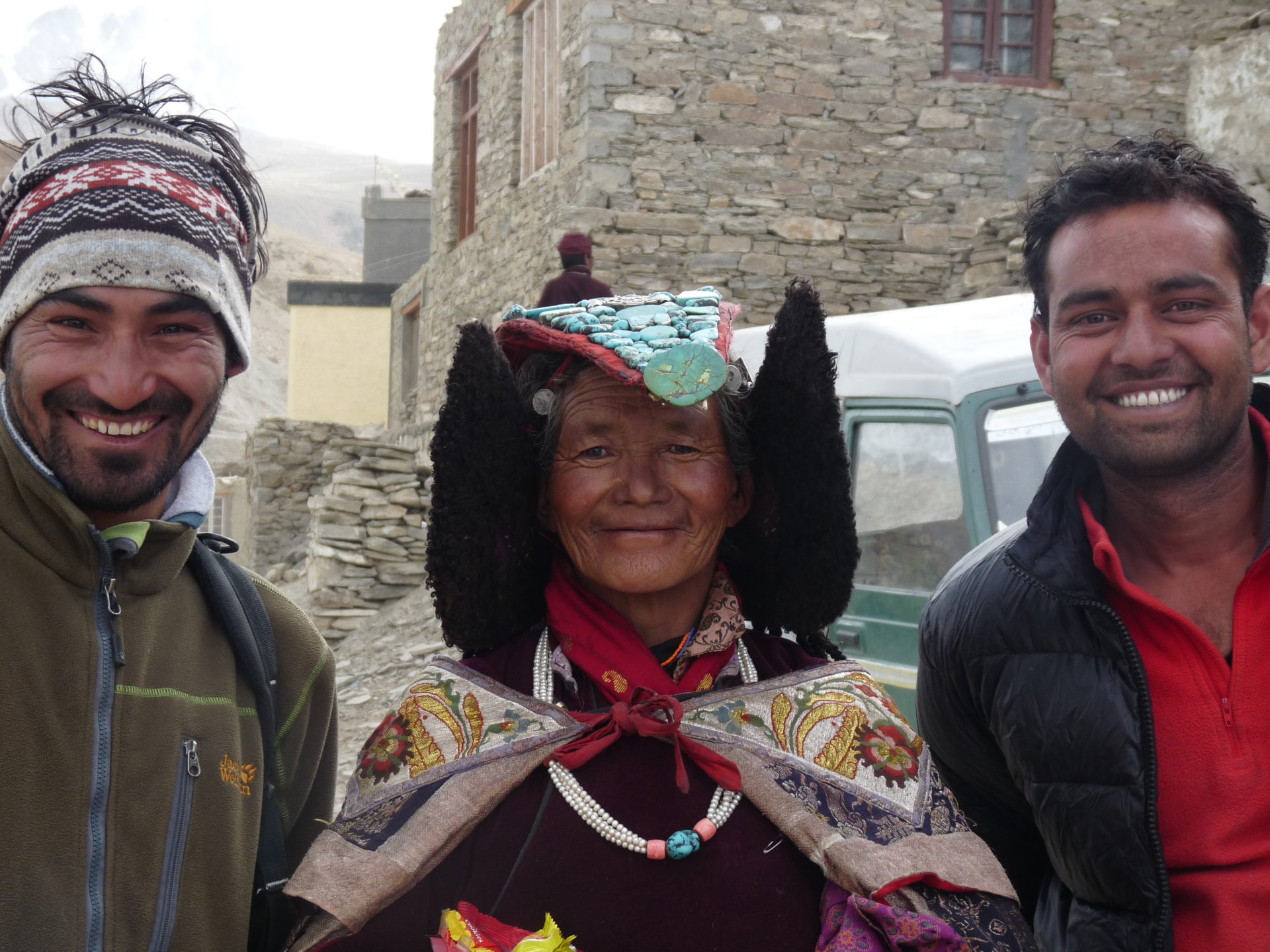
Local Woman 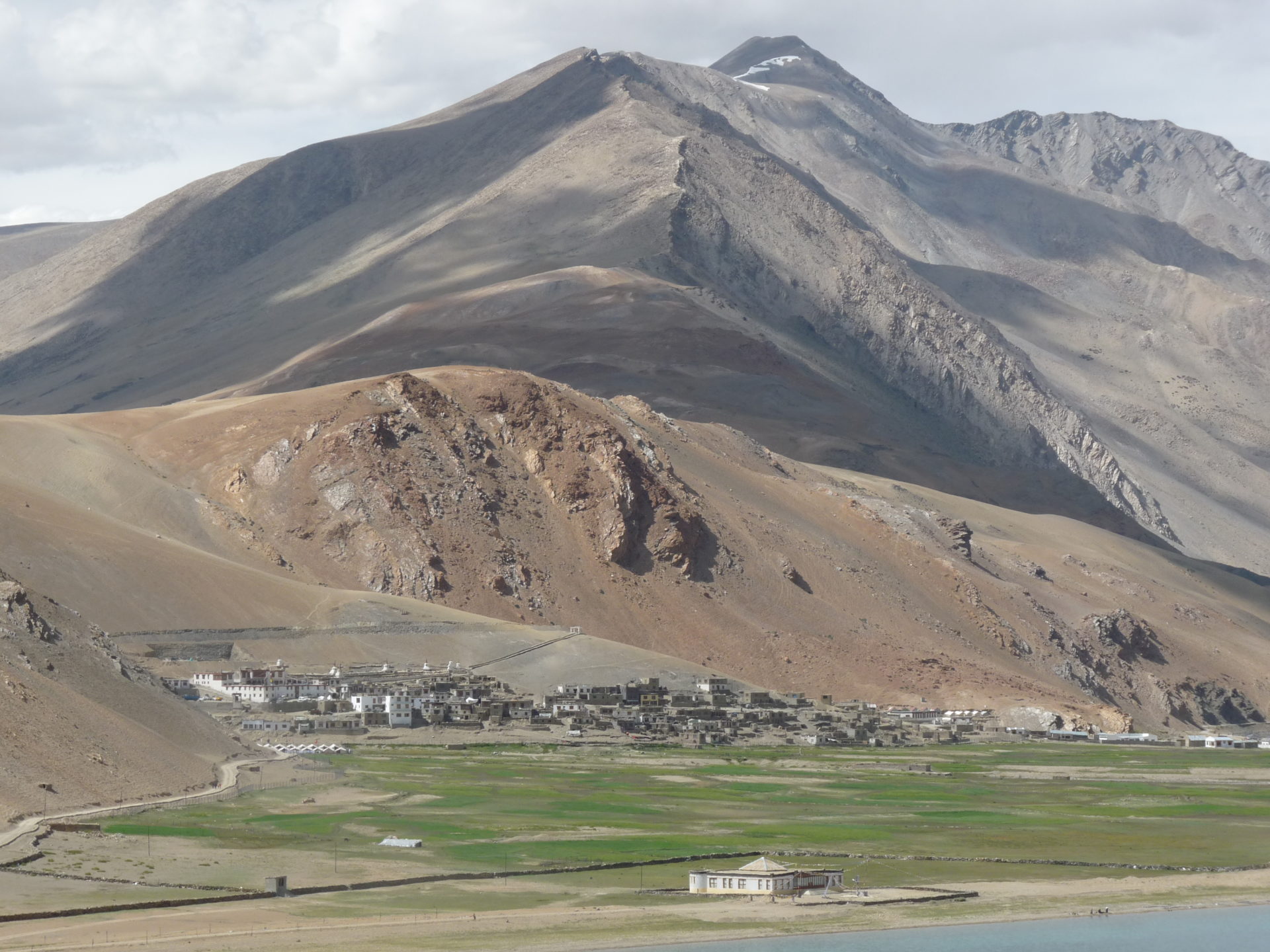
Karzok 
Tsomoriri Lake 
Camp 
Marmot 
The green Sumdo Numdo 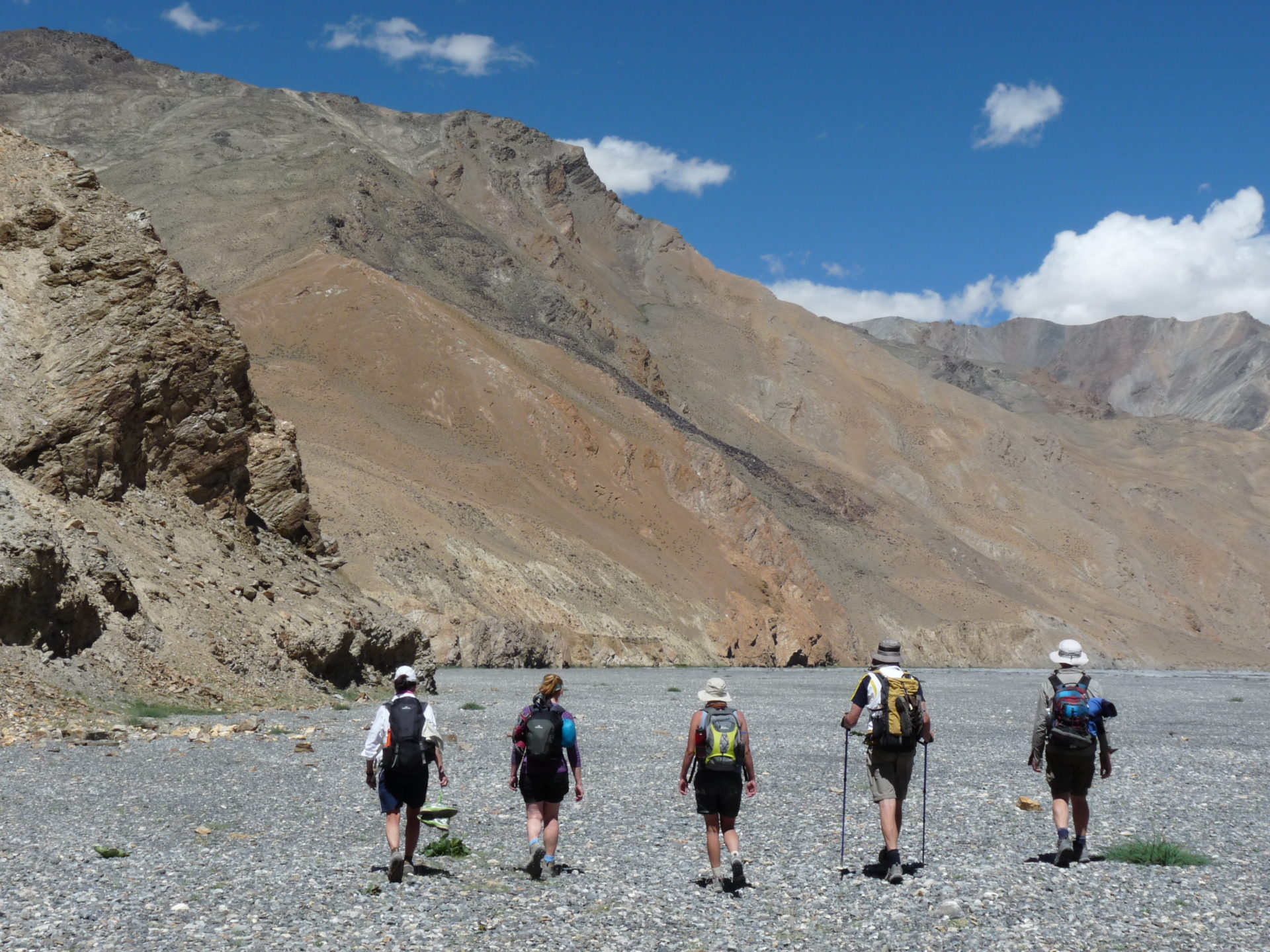
Kibber Tsomoriri Trek 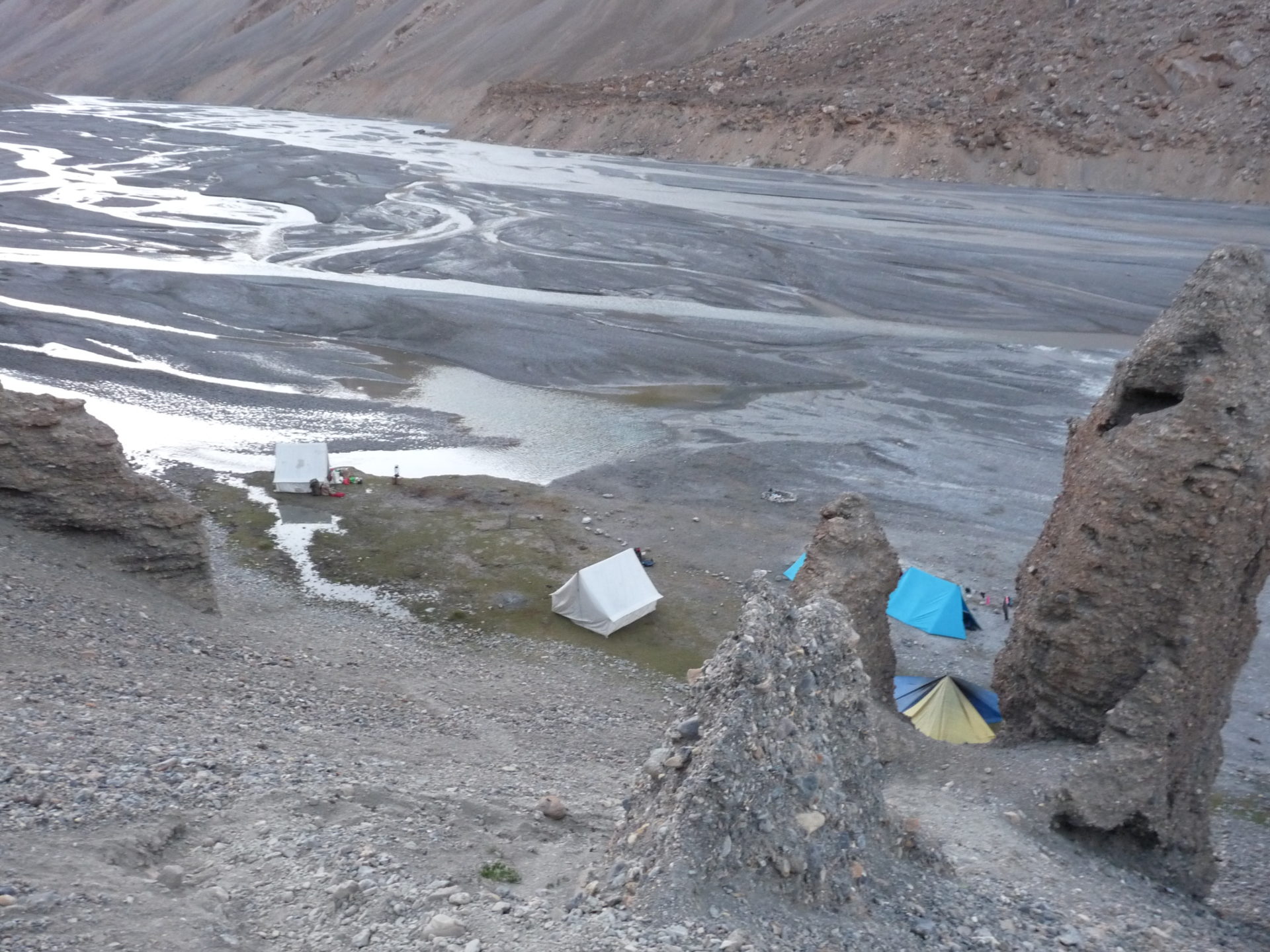
4. Camp! 
River Crossing 
River Crossing 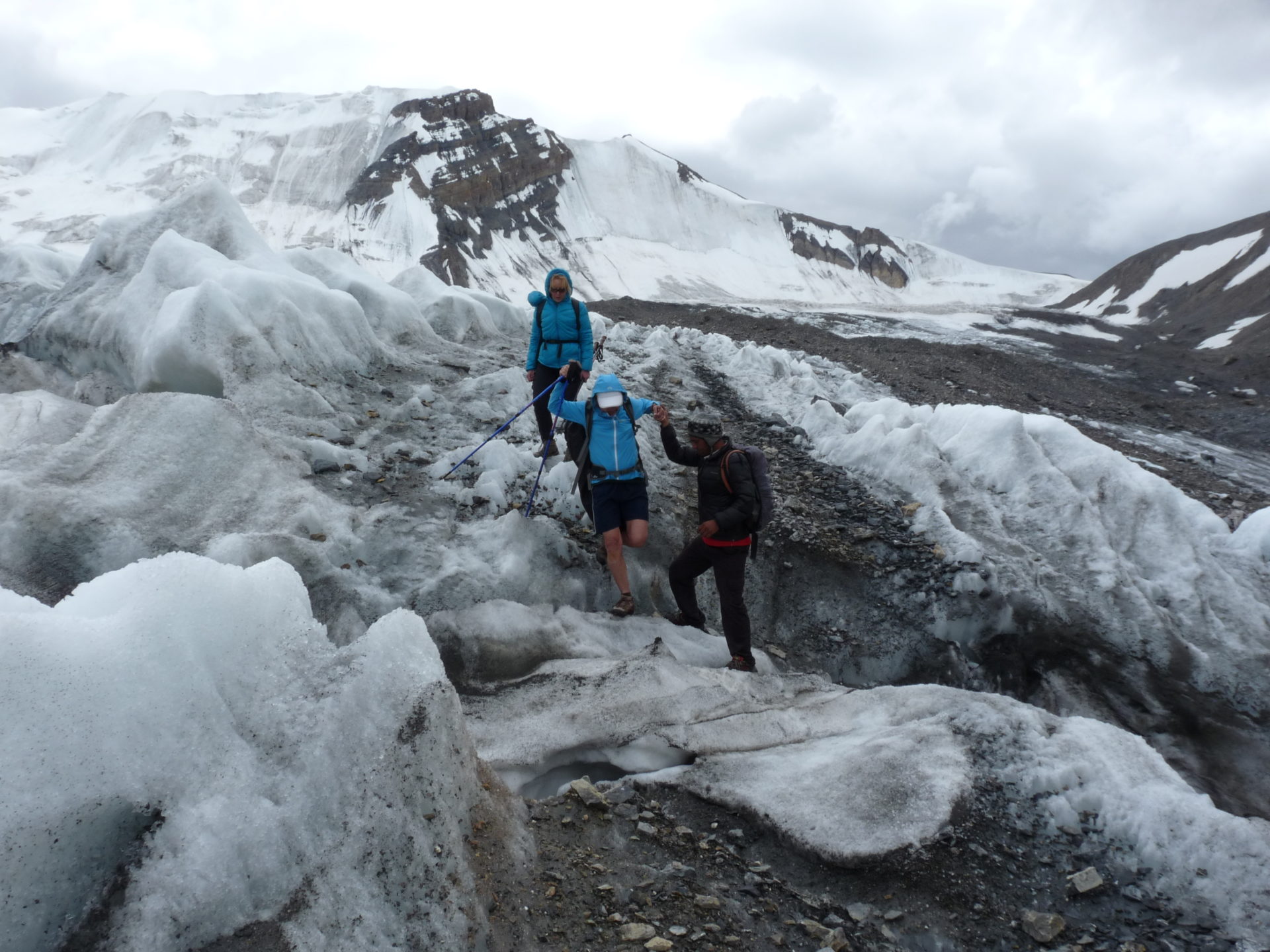
Parang La 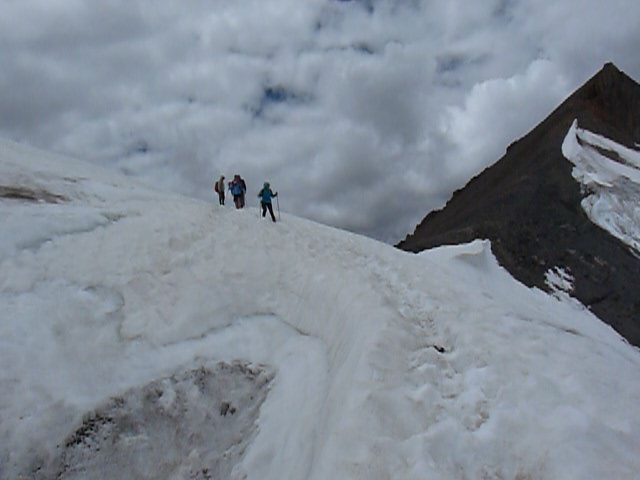
Parang La Pass 
Parang La Pass 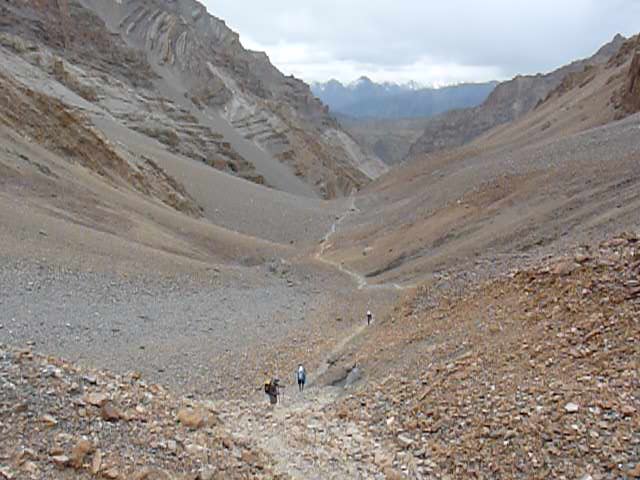
Kibber Tsomoriri Trek 
Base Camp at 5100 m 
River Crossing 
Kibber Tsomoriri Trek 
Dining Tent 
Kibber Tsomoriri Trek 
Kibber at 4200 m 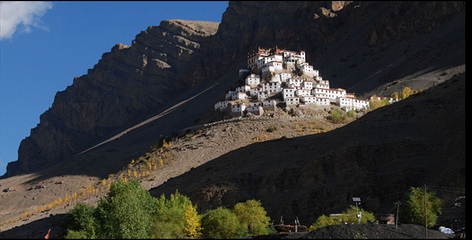
Ki Monastery 
Kibber 
Sheppard Man 
Parang La 
Parang La Pass 
Kibber-Tsomoriri Trek 
Camp 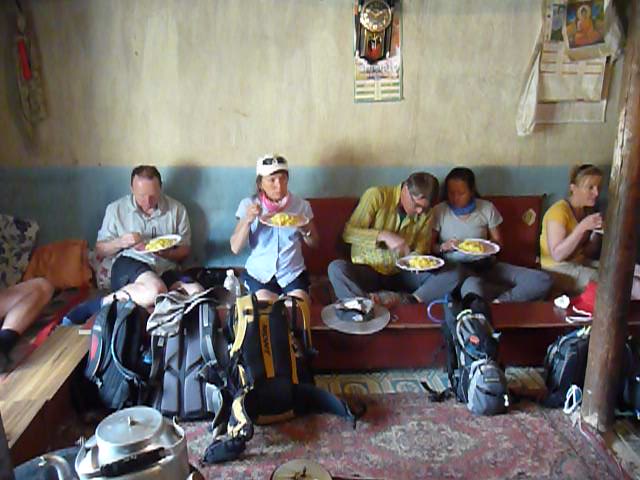
Local lunch 
Pass 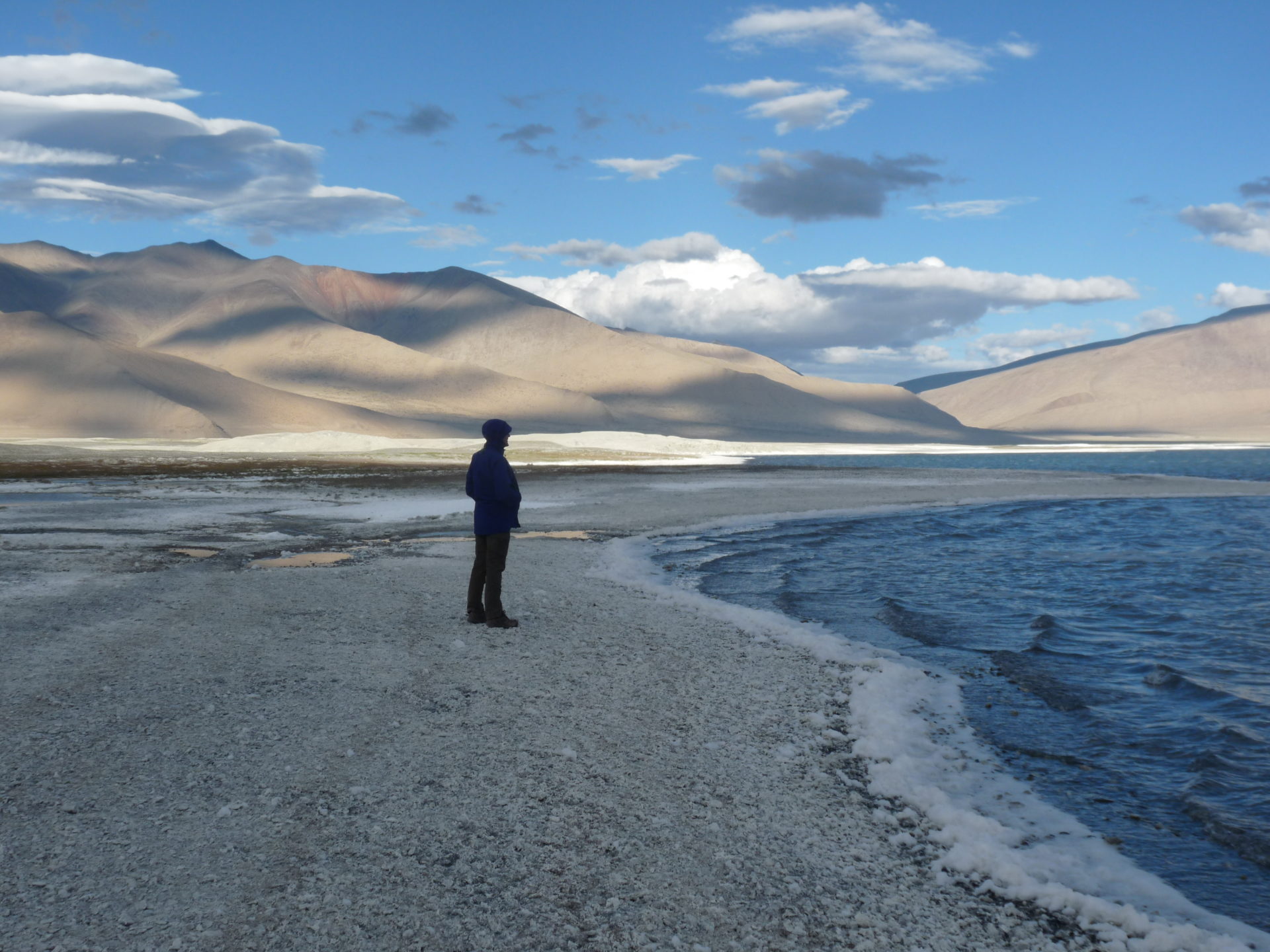
Tsokar Lake 
Leh 
Festival in Hemis 
Monastery 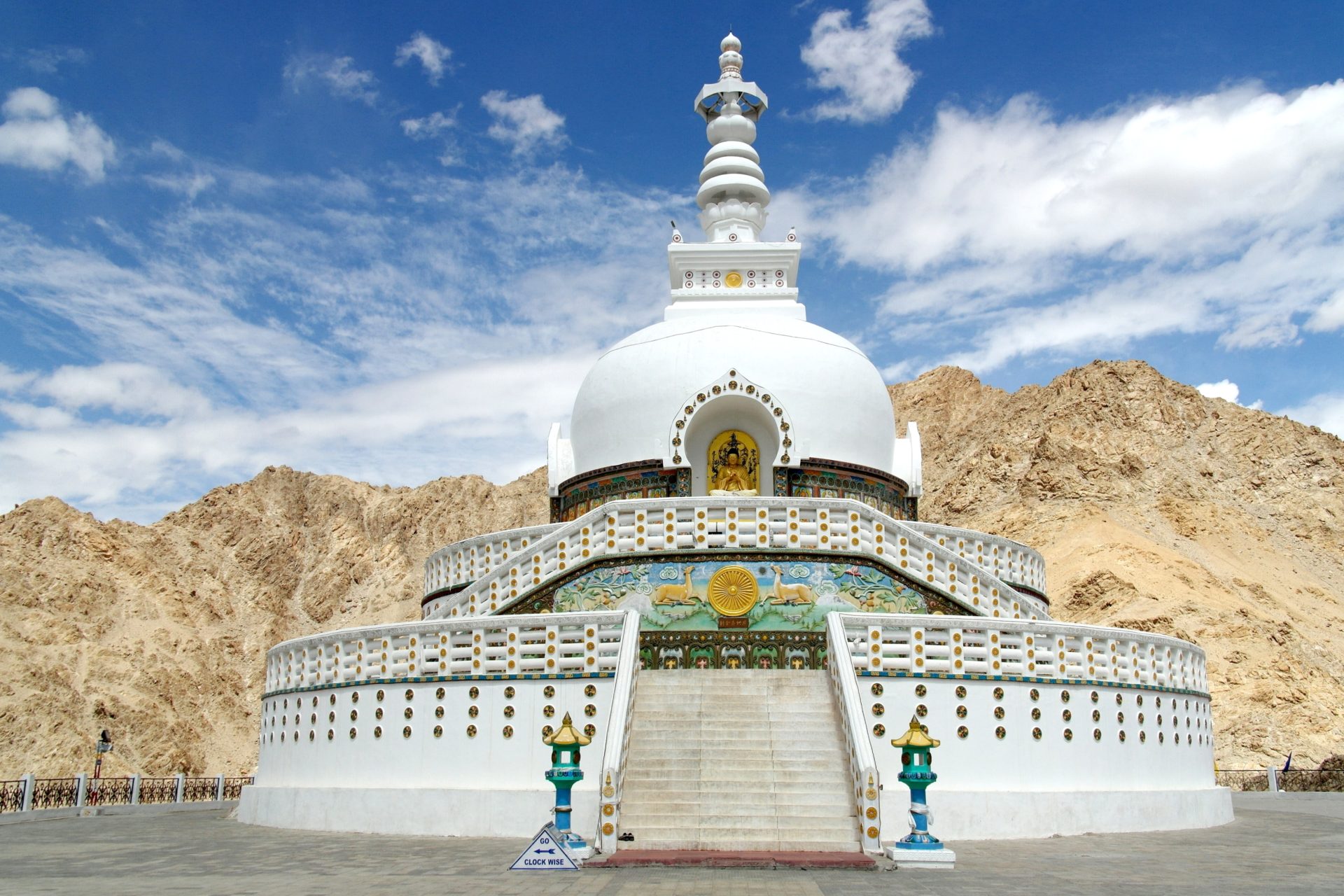
Shanti Stupa 
Leh Palace
Prices and Dates
This tour is possible from June to September
1 participant from 2999 € per person
2 participants from 2199 € per person
3-4 participants from 1699 € per person
5-6 participants from 1449 € per person
Tour Info
Requirements
A challenging trekking tour up to 5578 m. Physical fitness, stamina, vertigo and sure-footedness are a prerequisite.
Information about the Trekking Tours with Chalo! Travels
Mountain guide and trekking team
On all our treks we have at least one (for larger groups of 6 participants two) trained local mountain guide. Our mountain guides have all completed at least the Indian mountaineering training, many of them have also completed the advanced courses.
They are familiar with the trekking routes and know the terrain excellently. All our mountain guides speak English.
In addition, there is a local team consisting of a cook (if the group consists of only two participants, the mountain guide also takes over the tasks of the cook), helpers, horsemen with horses or Nepalese porters, depending on the type of trek.
All our team members have been working with us for years, are very friendly and always strive to provide our guests with a great trekking experience. Their English (besides of the Guide) is rather mediocre or non-existent, but this is not necessarily a hindrance to communicating with them.
Trekking Routes
The trekking routes are designed according the skills of our guests and are all feasible for a person with a good fitness level, unless otherwise mentioned. The daily routes are between five and eight hours long (with breaks) and an average increase of around 500-800 metres of altitude is completed.
In between, rivers may have to be crossed. The paths are partly well developed, but sometimes also almost non-existent. On our trekking routes there are hardly any villages in between, so we will take enough food for the whole tour.
On our treks we cross passes, snow or glaciers. On steep slopes, we have safety equipment with us.
Daily routine (Depending on the length and intensity of the trek, the times may vary)
7: 00 am Get up with Tea
7:30-8:30 am Breakfast
7:00-9:30 am Dismantling of the camp
8:00- 9:30 am Start Trek
1:00 pm Lunch on the way
3:00-5:00 pm Arrival at the camp and camp construction
3:30-5:30 pm Snacks
7:00 pm Dinner
Altitude and altitude sickness
Altitude sickness is a very important topic that should not be underestimated, especially during our trekking tours in the Indian Himalayas. At altitudes above 3500 m, our body has to slowly get used to the low air pressure, which also causes less oxygen to enter our lungs. The first signs of altitude sickness are headaches, which are accompanied by dizziness, nausea, insomnia and loss of appetite. It becomes problematic when water accumulates in the lungs and brain and edema occurs. Then only the immediate descent to lower altitudes will help. To prepare for the heights on our treks, we will either spend a few nights at high altitudes before the trek or slowly ascend during the trek to acclimatize. If we notice that there are problems with our guests (each person is otherwise able to acclimatize, regardless of age, gender and fitness level), it may happen that either the entire group or the concerned participant descends/returns with a team. In addition, it makes sense to take an emergency drug for altitude sickness. For this, it is best to consult the pharmacy or the travel doctor. For certain treks we will also have oxygen with us.
Luggage
Each trekking participant is responsible for his own clothes and personal belongings. Depending on the trek, we are either with horses or porters. If we have load horses, one bag per participant can be loaded onto the horse. In the case of treks with porters, all personal luggage must be carried independently. Tents, sleeping bags, mattresses and food are carried by our porters.
For trekking tours with horses, a day backpack with space for the lunchbox, a water bottle and warm overcoat clothing should be taken with you. Here to the complete packing list for our trekking tours.
Packing list for trekking tours
- sleeping bag at least -10°C
- large backpack or soft carrying bag so that the load animals can carry the luggage
- Small carrying backpack for the day approx. 30-40 l with rain protection
- flashlight/headlamp
- 2 refillable water bottles
- hiking poles
- passport and passport copy
- camera with spare battery and memory card
- headgear as sun protection
- Good Sunglasses
- cap
- Scarf, Buff
- Gloves
- wind-proof trekking pants
- trekking pants
- Functional Underwear Long
- hiking boots
- socks thick and thin
- sneakers, sandals and/or slats
- windbreaker
- Warm Jacket
- fleece sweater/jacket
- Tshirts
- sunscreen, lip balm min. Protection 40
- fat cream
- water purification tablets (boiled and filtered water is provided)
- own medications for headaches, nausea, digestive problems, colds)
- bubble patches and dressing material
- own hygiene articles
- Toilets Paper
- hand disinfection
Meals
During the trek there will be a vegetarian full catering. Water is either boiled or we have a water filter with us.
Breakfast (daily selection):
- Coffee/Tea
- Oatmeal porridge/muesli/cornflakes/Indian porridge
- Indian breakfast
- Sliced fruit/vegetables
Lunch (mostly lunchbox), sometimes warm in the camp
- Sandwiches/Indian (rice, chapati, vegetables)/potatoes
- Juices
- Chocolate
- Fruit
Snacks
- Tea/coffee
- Cookies
- French fries/Indian snacks
Soup
Dinner (depending on the length of the Trek mix of Indian/Chinese/Continental)
- Vegetable dish
- Lentil dish
- Rice/noodles
- Chapati
- Salad
- Dessert
Accommodation and camp
We have very comfortable and spacious two-man tents. Our mattresses are practical but simple if there are problems with sleeping on hard surfaces, please take your own mattress with you or order from us. Our sleeping bags are freshly washed and have a very good quality with comfort zone up to -5°C/extreme zone up to -20° C. It is recommended to bring personal indoor sleeping bags.
In addition, we have a spacious dining tent with tables and chairs, a kitchen tent for the team and a toilet tent. For treks up to 4 people, the kitchen tent can also act as a dining tent at the same time.
For trekking tours with porters, we will take our smaller, lighter tents with us and do without a toilet tent.
Weather
In the Himalayas, temperatures fluctuate widely. While it can get warm up to 25°C during the day and the sun is not only warming, but also very intense (sun protection is a must), it can also cool down significantly below the minus-grade at night, especially in the months end of September and October, as well as in June. There may also be weather changes with snow on the passes.
-
5
Überschrift
Lorem ipsum dolor sit amet, consetetur sadipscing elitr, sed diam nonumy eirmod tempor invidunt ut labore et dolore magna aliquyam erat, sed diam voluptua.



